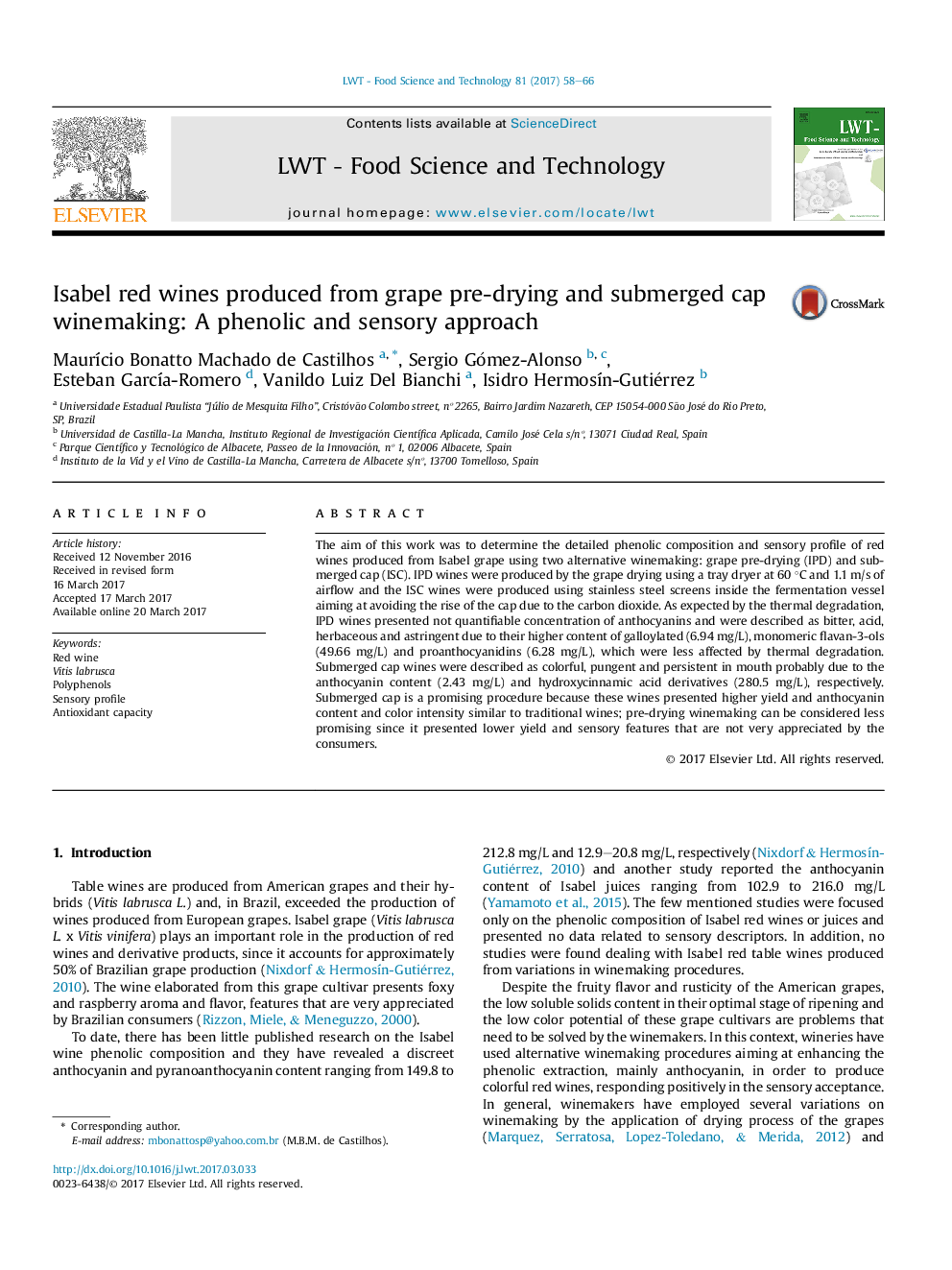| Article ID | Journal | Published Year | Pages | File Type |
|---|---|---|---|---|
| 5768474 | LWT - Food Science and Technology | 2017 | 9 Pages |
â¢Flavan-3-ol content was not affected by drying process.â¢Hydroxycinnamic acid derivatives were less affected by heat.â¢Submerged cap method produced wines with high color intensity.â¢Submerged cap wines were described as structured and full-bodied.â¢Pre-dried wines were described as bitter, acid and astringent.
The aim of this work was to determine the detailed phenolic composition and sensory profile of red wines produced from Isabel grape using two alternative winemaking: grape pre-drying (IPD) and submerged cap (ISC). IPD wines were produced by the grape drying using a tray dryer at 60 °C and 1.1 m/s of airflow and the ISC wines were produced using stainless steel screens inside the fermentation vessel aiming at avoiding the rise of the cap due to the carbon dioxide. As expected by the thermal degradation, IPD wines presented not quantifiable concentration of anthocyanins and were described as bitter, acid, herbaceous and astringent due to their higher content of galloylated (6.94 mg/L), monomeric flavan-3-ols (49.66 mg/L) and proanthocyanidins (6.28 mg/L), which were less affected by thermal degradation. Submerged cap wines were described as colorful, pungent and persistent in mouth probably due to the anthocyanin content (2.43 mg/L) and hydroxycinnamic acid derivatives (280.5 mg/L), respectively. Submerged cap is a promising procedure because these wines presented higher yield and anthocyanin content and color intensity similar to traditional wines; pre-drying winemaking can be considered less promising since it presented lower yield and sensory features that are not very appreciated by the consumers.
